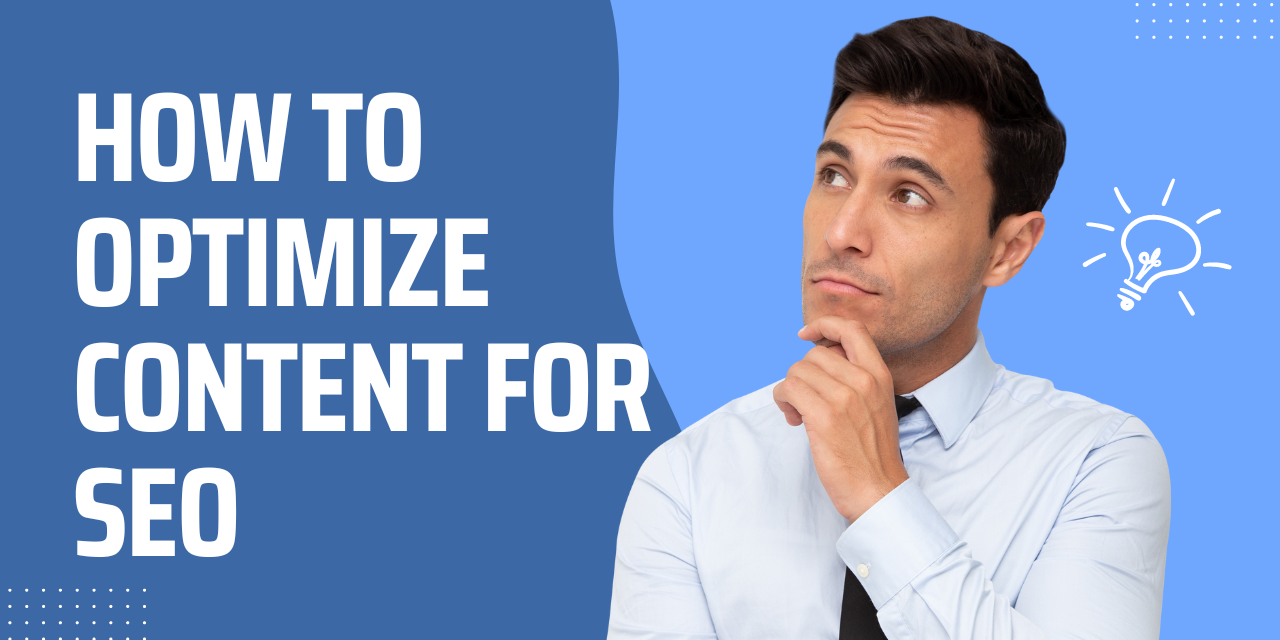Optimizing content for SEO (Search Engine Optimization) is crucial to ensure your web pages rank higher in search engine results, leading to increased visibility and organic traffic. Here are some steps to How To Optimize Content For SEO:
Keyword Research:
Identify relevant keywords and phrases that your target audience is likely to use when searching for content related to your topic. Use keyword research tools like Google Keyword Planner, SEMrush, or Ahrefs to find high-volume and low-competition keywords.
Create High-Quality Content:
Develop well-written, informative, and engaging content that provides value to your audience. Content that answers questions, solves problems, or educates tends to perform well.
Use Keywords Strategically:
Incorporate your chosen keywords naturally into your content, including in the title, headings, subheadings, and throughout the body. However, avoid keyword stuffing, as it can negatively impact the user experience and SEO.
Optimize Page Titles and Meta Descriptions:
Craft compelling and relevant page titles (H1 tags) that include your primary keyword. Write meta descriptions that accurately summarize your content and entice users to click through.
Use Descriptive URLs:
Create clean, descriptive URLs that include keywords relevant to the content. A clear URL structure improves user experience and makes it easier for search engines to understand your page’s topic.
Optimize Images and Media:
Compress images to ensure fast loading times and use descriptive alt text to help search engines understand the content of images. Use appropriate file names for images that include keywords.
Internal Linking:
Include internal links to other relevant pages on your website. This helps search engines crawl and index your content, as well as keeps users engaged by guiding them to related information.
External Linking:
When appropriate, link to reputable external sources. This can enhance the credibility of your content and provide additional value to readers.
Mobile-Friendly and Responsive Design:
Ensure your website and content are optimized for mobile devices. A responsive design improves user experience and can positively impact SEO.
Page Loading Speed:
Improve your website’s loading speed by optimizing images, using caching, minimizing code, and choosing a reliable hosting provider. Page speed is a known ranking factor in search algorithms.
Schema Markup:
Implement schema markup to provide search engines with additional context about your content. This can lead to rich snippets in search results, increasing visibility.
Regularly Update Content:
Keep your content up-to-date and relevant. Regular updates signal to search engines that your site is active and authoritative.
Social Signals:
While not a direct ranking factor, social media shares and engagement can indirectly impact SEO by increasing your content’s visibility and attracting potential backlinks.
Monitor and Analyze:
Use tools like Google Analytics and Google Search Console to track the performance of your content. Monitor keyword rankings, click-through rates, and user engagement to make informed improvements.
Backlink Building:
Aim to acquire high-quality backlinks from reputable websites. These backlinks signal to search engines that your content is valuable and authoritative.
Remember, SEO is a long-term strategy, and results may take time to show. Consistency and a user-centered approach are key to successful content optimization for SEO.





